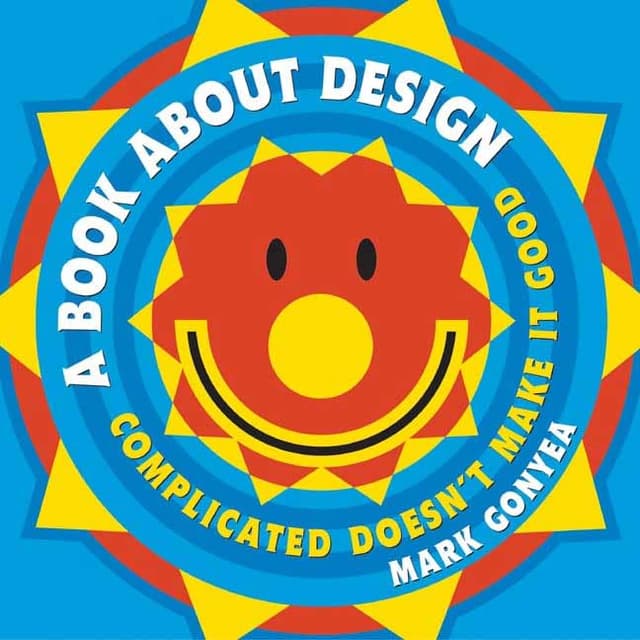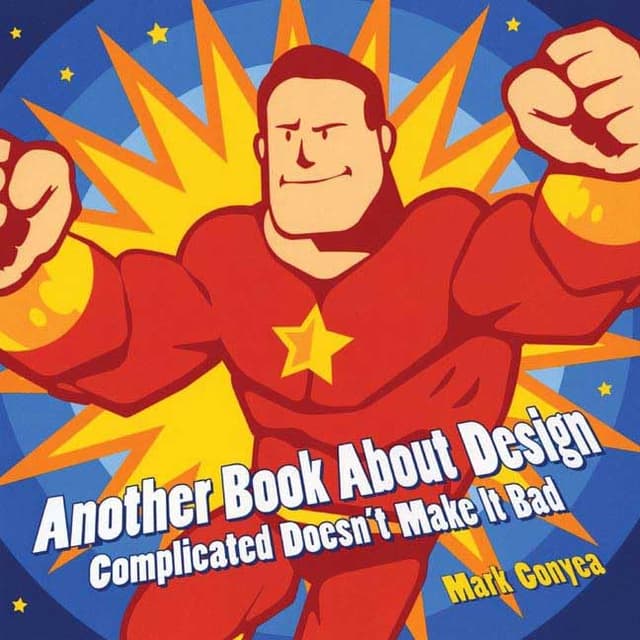Colin Nagy | October 31, 2021
The Executive Edition (10/31/21)
The subscribers only deep cut from WITI
Recommended Products

A children's book by Mark Gonyea covering basics on colors, contrast, and ratios.

A continuation by Mark Gonyea on themes of design, following "Complicated Doesn’t Make it Good".
The story of a sample:
I was listening to an electronic composition, Mild un Leise, by Paul Lansky earlier this week.
Listen to the portion at around 40 seconds in:
Johnny Greenwood bought a compilation album the track was included on, and that beautiful little progression found its way into Ideoteque from the band’s album Kid A.
In the words of Paul:
I really like what they did with the sample; it is quite imaginative and inventive. mild und leise was composed in 1973 on an IBM 360/91 mainframe computer. I used the Music360 computer language written by Barry Vercoe. This IBM mainframe was, as far as I know, the only computer on the Princeton University campus at the time. It had about one megabyte of memory, and cost hundreds of thousands of dollars (in addition to requiring a staff to run it around the clock). At that point we were actually using punch cards to communicate with the machine, and writing the output to a 1600 BPI digital tape which we then had to carry over to a lab in the basement of the engineering quadrangle in order to listen to it. Here is a photo of me in the lab a few years later. The piece came out on a Columbia/Odyssey LP in 1975 or so as a result of a contest run by the International Society for Contemporary Music (ISCM). It was called Electronic Music Winners.
Paul was around the age of Johnny Greenwood when he made the piece. “A bit of a musical time warp,” as he describes it. I’m inspired by both the effort that went into the creation of the original piece, as well as the patience from Johnny in sourcing and working that sample into one of the more memorable songs of Kid A. Bravo all around. (CJN)
Department of retail experiences:
I just got an old Rimowa pilot’s case returned from service. For a nominal fee, they did major surgery on the case. It was missing a foot, had some chips and dings, and was looking a little worse for the wear. I got it back with some of its patina and vibe, but ready to go. The same can be said for Rancourt shoes. They have a program where you can send a pair that have been beaten up and they will completely restore them (for a fee). It’s like having a lifetime pair of shoes. (CJN)
Design Thoughts of the Week:
There’s this quote from the Steve Martin classic LA Story that I think of a lot when I’m working with product and website designers.
One of the first things I always teach my clients is about the point system. You should never have more than seven things on. You know, like your earrings count for two points, those daisies count for three points. But the best thing to do is, right before you go out, look in the mirror and turn around real fast, and the first thing that catches your eye, get rid of it. I mean, I had this thing in my hair before I left, remember? And I pulled it right out, ’cause as soon as I turned, gone! Marilyn Monroe did that.
The quote is mostly attributed to Coco Chanel apparently (though I haven't done enough independent research to verify that). It’s obviously a theme that comes up a lot in design—removing things is equally, if not more, important than adding them. But there’s something about the simplicity of this as a heuristic that I find helpful. It’s not just a philosophy about how to design things, but also an approach to ensure it’s delivered.
To the broader point, there’s a great series of children’s books by Mark Gonyea about design. The first is called Complicated Doesn’t Make it Good, which covers some basics on colors, contrast, and ratios, while Complicated Doesn’t Make it Bad carries on with the themes. (NRB)
ICYMI:
We had a strong week of guests this week, which is always appreciated. Big thanks to Cass, Jann, and Brady.
Here’s the week:
The Futureproof Conservation Edition: On extreme variations and thinking ahead
The Omotenashi Edition: On Tokyo, hospitality, and a subtle surprise
The Ranger School Edition: On lines of drift, willpower, and learning through pain
The May-December Collaboration Edition: On reaching new audiences, Frankenstein constructs, and chart hits (NRB)
A quick read:
I thought this piece from Amanda Hess on mental health representation in popular culture and social media was really interesting. There’s been something nagging at me for a while in the newfound desire to “normalize mental health,” and I still haven’t been able to articulate it properly. I’m all for the concept in theory, but in practice, I find much of the normalizing to be strangely performative, which is a lot of what Hess is covering. I thought her point on the distinction between mental health and mental illness was particularly interesting, with the latter “eliding specific diagnoses and more stigmatized, less marketable symptoms.” (NRB)
What Noah watched on Youtube this week:
Each week I watch a lot of YouTube. I thought it might be fun to pull out a few favorites.
In this week’s random YouTube sports we have bowling. First, there’s this excellent Veritasium on the physics of bowling and innovations in ball design and lane oil patterning. Chase that with this 300 game from Sam Cooley.
Not bowling, but this foot cam from MotoGP is pretty fun.
A 10-minute primer on undersea power cables. And from the same channel (a recent subscribe): The Dangerous Processes of Manually Scrapping Gigantic Old Ships.
Video from an A380 engine blade-off test. This is required of all new airplane engines and is essentially like setting a bomb off inside to make sure the engine can withstand the impact without releasing any shrapnel into the body of the aircraft.
I had totally forgotten about BeamNG videos on YouTube. BeamNG is this crazy physics engine and they have a drive game that you can just simulate what happens to cars in different situations. Here are eight minutes of cars versus upside-down speed bumps. If you want more, here are some big loops, some small loops, a giant weird race, and, last but not least, 100 consecutive speedbumps.
Graffiti with super high-pressure spray paint cans.
Looking for that LA Story clip sent me down a rabbithole. There’s the amazing opening, open season on the freeway, and restaurant reservation negotiation. (NRB)
Remarks complete. Nothing follows.
Colin and Noah
